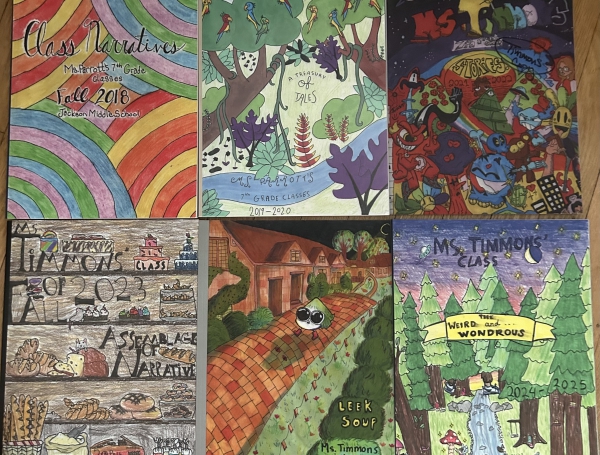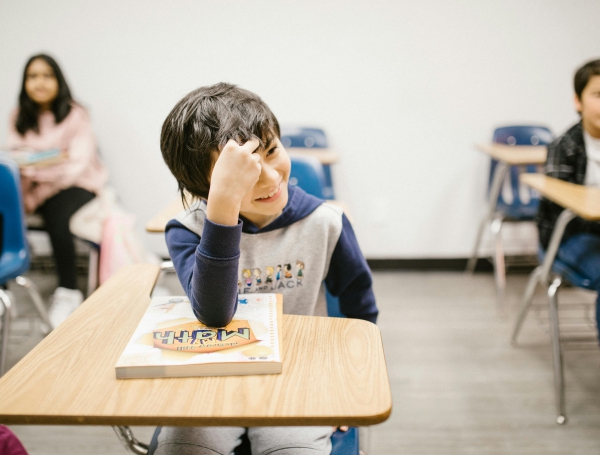

Building Worlds with Backwards Thinking
September 12, 2022
How does a teacher get students to write who don’t want to write? And what I mean is how does a teacher who loves to write in his free time get the students who strongly resist writing to become great writers?
I’m not talking essays or paragraphs or even sentences for paper handouts. I’m talking about the meaningful and creative writing that produces a particular voice, in a particular point of view, using imagery, craft, and a setting with clear sensory detail.
Too much?
Too high of expectations?
Hmm…
For a while, my answer was a struggling yes. I didn’t like it, but I felt I had to accept it. I pondered these questions often at the beginning of my teaching career while wondering why students couldn’t see the fun and imagination writing can bring to our lives.
I’ve always viewed writing as an escape from reality, and it was my chance to create a world that I was in control of using the ideas I spent my time thinking about or reading about or watching in movies and on TV. And it was difficult for me to accept my inability to create that same passion for writing in every one of my students.
For the longest time in my youth, I was considered a jock—baseball, basketball, and football consumed my afterschool time. But what most didn’t know was that at night, in the darkly lit bedroom I shared with my older brother, I escaped to a metal desk, where I kept journals and notebooks full of drawings and sketches with descriptions, short stories, and lists of details for different genres. Science fiction and fantasy were at the top of my imagination, where trolls and dwarfs and self-made creatures moved throughout stories that mimicked Tolkien, Eddings, and Jordan.
I was consumed by worlds different from those I walked within.
Then, as an adult, I had an epiphany about five years into my teaching. I’m reading the clever writing of dialogue and descriptions by Terry Goodkind and the world he creates with Richard Rahl and Kahlen Amnell, and it dawns on me that maybe my students need to see the worlds they don’t know they’re looking for to help them write. I mean, I didn’t need the help. The various dimensions of genre had already nested within my imagination, and I could see these places without even having to close my eyes.
But possibly, people—like my students—needed some help. Instead of creating the writing out of thin air to create a story, maybe writing could be created from an existing world. What if pictures could inspire writing, creativity, and joy that is new and surprising?
I began a journey seeking pictures of various moods and tones, building a collection of worlds students could look at to inspire them and kickstart their imagination. Practice birth skills; so if students could practice writing more, they should be able to learn some skills they had yet to acquire.
And since I was producing only pictures, I began encouraging scene writing, and I abandoned the full story with expositions and rising actions. I omitted the requirements for using all story elements and had students focus on a part of a story: the scene of the picture.
Every day at the beginning of class, my students would free-write for five minutes inspired by a different picture. Each day brought new ideas, situations, conflicts, and characters. The pictures ranged from simple forest scenes to complex and odd pictures with shadows in haunted houses. Sometimes I would turn on some instrumental music or background sounds for students to grab ahold of for details.
After the free-write, students would highlight sentences they created that was their favorite. They would share those verbally or on index cards to be passed around. We would laugh, admire, and sometimes even be wowed! Themes and phrases would reappear in student writing day after day, and we would always wait for the same character to appear, listening for our personal predictions to come true. The same dialogue or phrase would find its way into a fantasy world and an alien spaceship in a matter of days. Students were obtaining reputations and expectations from their peers very positively.
They would create these new ideas every day for five minutes. Some days were great, and some days were a struggle, but it became a habit of creation and imagination. They would take a world already created and work backward to determine what was happening, who was involved, and what it felt like to be there.
Weeks would pass, and students were given the opportunity to choose one idea out of the many they’ve collected, one picture, and free-write and expand its writing. They would develop the scene with sensory details; figurative language would get some play through metaphors and personification; second person point of view would get attempted alongside the first person. Eventually, a student that started small with a five-minute free-write would end up with a one-page scene that had tension, craft, voice, and perspective. They focused on slowing down the pace and developing the senses. The moment of the scene was short and mysterious, making readers question and predict.
Those struggling writers, or those resistant writers, always came away happy. They always found something they loved that they designed, and it became their own creation. It was theirs and theirs alone. Sure, there was a picture we got off the internet, but the story, words, and skill were all theirs.
They smiled. They beamed. They shared and hung up their stories for the whole school to read. By working backward, and using a world already made as a catalyst, those students that didn’t want to write became students that couldn’t stop.
This guest article was written by Timothy Murdick while taking the online continuing education course, Editing Made Easy: Strategies For All Writers, by THI instructor Mary Ann Johnson.




